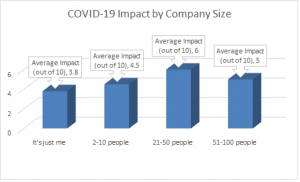Maximizing Oil & Gas Profitability with Energy Data in Balance Part 3 SCADA, Measurement and Production Accounting in Harmony
Content
Program Description
Oil and Gas Production Accounting teaches the basics of petroleum production accounting as it relates to the petroleum industry. Oil and gas production accountants are responsible for compiling, managing and reporting financial and production data for the oil and gas industry. Production accountants are specialists in their field and must have a sound knowledge of petroleum products in addition to an understanding of the industry’s financial practices and government regulations. This program was developed and certified by the Canadian Association of Petroleum Production Accounting (CAPPA). A challenge that the company had previously faced was consolidating its data-gathering efforts for field operations, leading to time-consuming manual tabulation and overall efficiency in the process.
In trying to address this manual data management problem, solutions also tend to be manual, with production accountants quite literally tracking down lease operators to take or retake readings from specific wells. Oil and gas accounting software, when combined with electronic field ticketing and invoicing solutions, plays a vital role in streamlining accounting and financial workflows. Oil and gas accounting software is designed specifically to meet the unique needs of the industry. It encompasses https://www.bookstime.com/ various modules that automate and integrate financial processes, including general ledger management, revenue recognition, joint interest billing, accounts payable and receivable, supply chain, production accounting, and financial reporting. These software solutions provide comprehensive tools and features to track, manage, report, and analyze operational and financial data. The digital oilfield ecosystem has never been bigger with the breadth and depth of software solutions continuing to expand.
How to Become an Oil & Gas Accountant
Despite digital oilfield transformation, advances have focused on drilling and completions. While progress in this domain has been critical to improving how companies develop their assets, innovation in the energy back office, in general, and production accounting, in particular, has lagged other departments. A leading independent oil producer in California was exploring innovative energy production methods to meet the state’s growing energy needs. Like many oil and gas companies, the operator relied on manual production accounting workflows that saddled engineering and accounting staff with time-consuming data management. The operator took a grassroots approach to building databases and bringing data together more efficiently.

You do still see DCFs sometimes, but they are more common for midstream, downstream, and oilfield services companies. The good news is that most of the same valuation methodologies you’re used to seeing – public comps, precedent transactions, and even the DCF model – still apply to (most) oil, gas & mining companies. One downside of the full cost method is that you need to test the PP&E balance every so often and apply write-downs if the book value gets out of line with the market value – so write-down and impairment charges are common on full cost companies’ income statements.
Consulting Services
We also undertake gap-fit analysis and develop interfaces to implement third-party HCA products. Using JOYN, the company was able to house everything in one place, with a month’s worth of allocations run in approximately 30 min., Fig. Furthermore, because of the analytics capabilities of the JOYN platform, the operator was able to review the data, send reports, create custom dashboards, and communicate all relevant information to stakeholders on the project. DD&A, production expenses, and exploration costs incurred from unsuccessful efforts to discover new reserves are recorded on the income statement. Initially, net income for both an SE and an FC company is impacted by the periodic charges for DD&A and production expenses, but net income for the SE company is further impacted by exploration costs that may have been incurred for that period. The alternative approach, known as the FC method, allows companies to capitalize on all operating expenses related to locating new oil and gas reserves regardless of the outcome.

In Statement of Financial Accounting Standards No. 19, the FASB requires that oil and gas companies use the SE method. These two governing bodies have yet to find the ideological common ground needed to establish a single accounting approach. Many Production Accountants must work with backend legacy systems while waiting on incoming well test results, fluid levels and task updates from field service teams. Confidential data integral to the entire oilfield operation could be sitting on a local hard drive or someone’s desk, further increasing the chances of a security breach. Baker Tilly’s oil and gas outsourced accounting specialists can build a tailored solution to meet your goals today and scale with you as you grow, whether you are looking to outsource your entire accounting function or seeking assistance to manage overflow work.
Key Financial Workflows Impacted by Oil and Gas Accounting Software
Auditability
Every change should be recorded, versioned, and traceable back to an identified individual or process. This program is offered full-time on the SAIT campus via an intensive, full-time 35-week program accredited by Alberta Advanced Education. Generally Accepted Accounting Principles (GAAP) as set forth by the Financial Accounting Standards Board (FASB) when managing the book of any company regardless of the size and whether a company is public or private. Additionally, it is essential to act with the utmost integrity, respect, and due diligence.
- Remember that, the accounting tips above, and the NAV model, and you’ll be more than ready to dominate your interviews.
- E&P companies improve efficiencies and achieve greater value for complex oil and gas accounting operations.
- You want to track the beginning and ending reserves each year, the annual production volume, and the average price for each commodity; typically you use the same low/mid/high price cases that you used in the company’s operating model.
- In this journey, much work has already been done to improve drilling performance and recoverable reserves from oil and gas wells, accelerated by the advent of digital technology throughout the value chain.
- That “dry hole expense” I mentioned above is another name for unsuccessful exploration, and some companies actually add it back on their cash flow statements (long story, but essentially they are using a mix of both standards).
Research the education requirements, licensure information and experience required for starting a career in industry accounting. In translating this success to business objectives, the operator is driving accountability to new levels with the JOYN platform. Having undergone rapid organizational transformation over a two-year period, the operator wanted to improve the integrity and accessibility of data from the wellhead to the corporate office, aligning with operating goals and values.
Our oil and gas services
This program was developed and certified by the Canadian Association of Petroleum Production Accounting (CAPPA). When combined with P2 Merrick and P2 Land, it provides field through financial processing that yields unmatched visibility into your operations, a reduction in overall costs, and increased profitability. Most major E&P companies implement the Successful Efforts (SE) method due to oil and gas accounting the transparency it provides. In SE, costs are capitalized based on whether the well is successful or not (i.e., hydrocarbons are produced). A merger model is a merger model is a merger model no matter how the company earns revenue, so nothing changes the fact that you need to combine all 3 statements, allocate the purchase price, and factor in synergies, acquisition effects, and so on.
The NUPRC boss explained that the focus of the agency included business continuity and low cost of production, accurate measurement and timely payment of royalty, uninterrupted supply of crude oil and gas as well as safety of the environment. College students should complete as many accounting internships as possible to gain the experience needed for CPA licensing requirements. Additionally, employers of oil and gas accountants tend to prefer applicants with at least 3-5 years of experience in oil and gas accounting, revenue, accounts receivable, coding and tax analysis. Dual degree programs allow students to complete bachelor’s and master’s degree programs in five years instead of six.
That seems straightforward, but it gets confusing on the other financial statements because some companies apply these standards inconsistently and use a “mix” of both. To get a sense of what the financial statements look like for a real company, click here to check out XTO Energy’s statements from just before they were acquired by Exxon Mobil. Generally you look at a company’s filings and figure out what is production-linked and what isn’t, and then assume an increasing dollar value for the production-linked ones over time and make the non-production-linked expenses a percentage of revenue or other items. So let’s say that a company has 12,000 billion cubic feet (12,000 Bcf) of natural gas in its reserves and produces 500 billion cubic feet (500 Bcf) annually. Idris added that the PIA 2021 also mandates the NUPRC to ensure end-to-end production accounting and certification from well head to terminal and allocates petroleum production quotas locally in conjunction with other relevant agencies of government. The Nigerian Upstream Petroleum Regulatory Commission (NUPRC) has re-emphasised the importance of accurate accounting in Nigeria’s oil and gas Industry.
Is oil and gas accounting difficult?
Financial Reporting
Of course, external reporting would also include the stock market if you're a public entity. With so many moving parts, all of these reporting requirements could prove to be difficult, perhaps even impossible, for an accountant without significant oil and gas experience.
As it continues to use the JOYN platform, the operator has set expectations for future benefits. The effect of choosing one accounting method over another is apparent when periodic financial results involving the income and cash flow statement are compared. Each method highlights the individual costs, which fall into the categories of acquisition, exploration, development, and production, differently.

댓글을 남겨주세요
Want to join the discussion?Feel free to contribute!